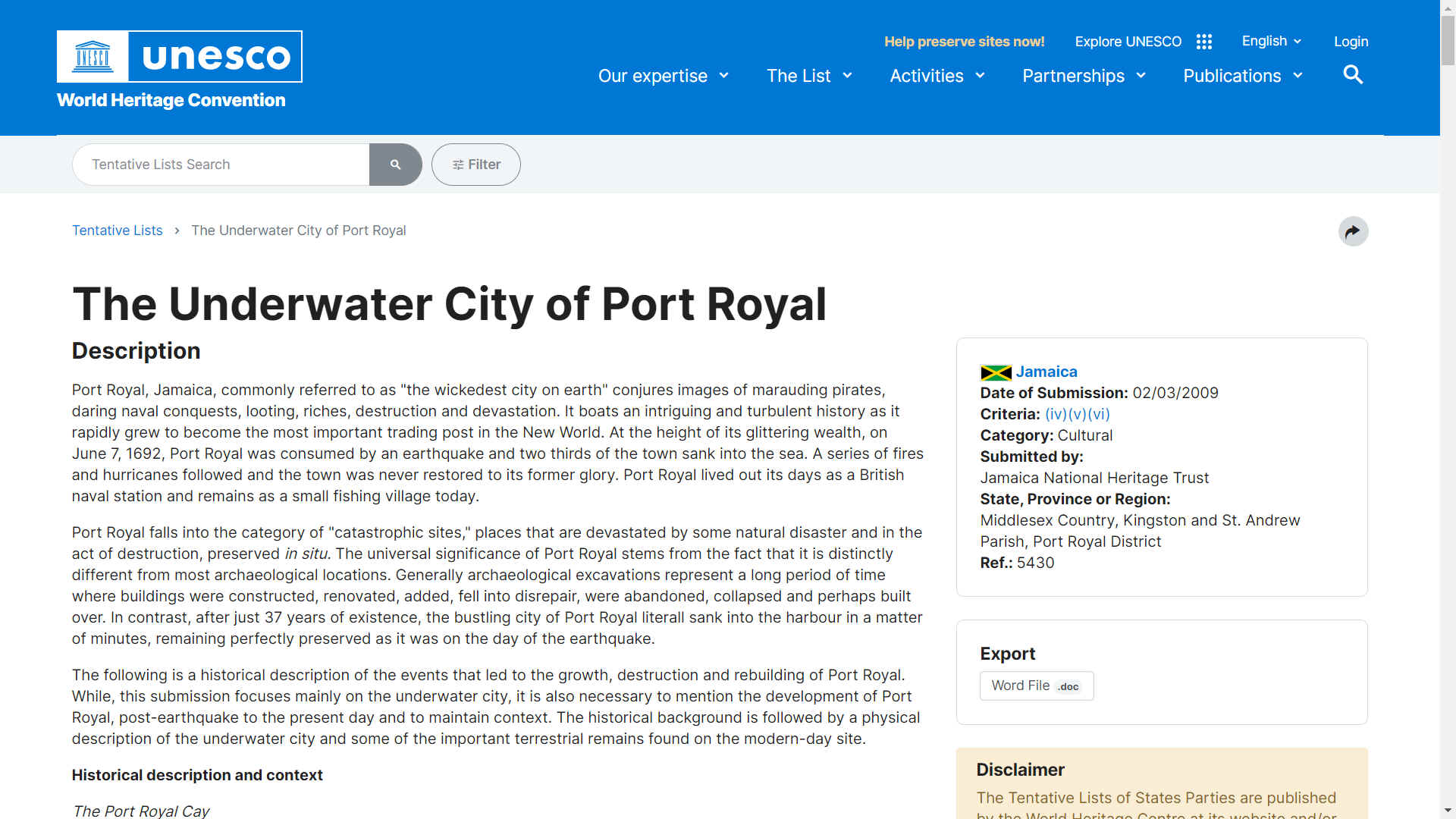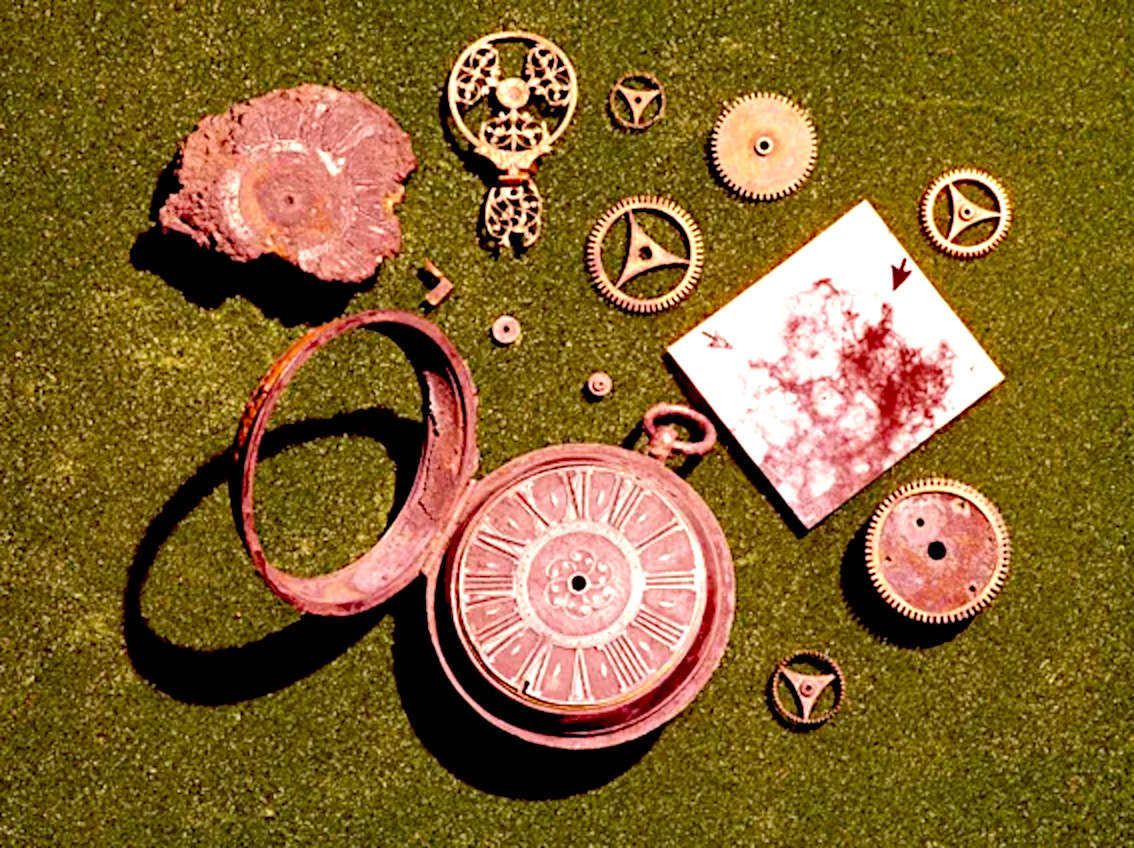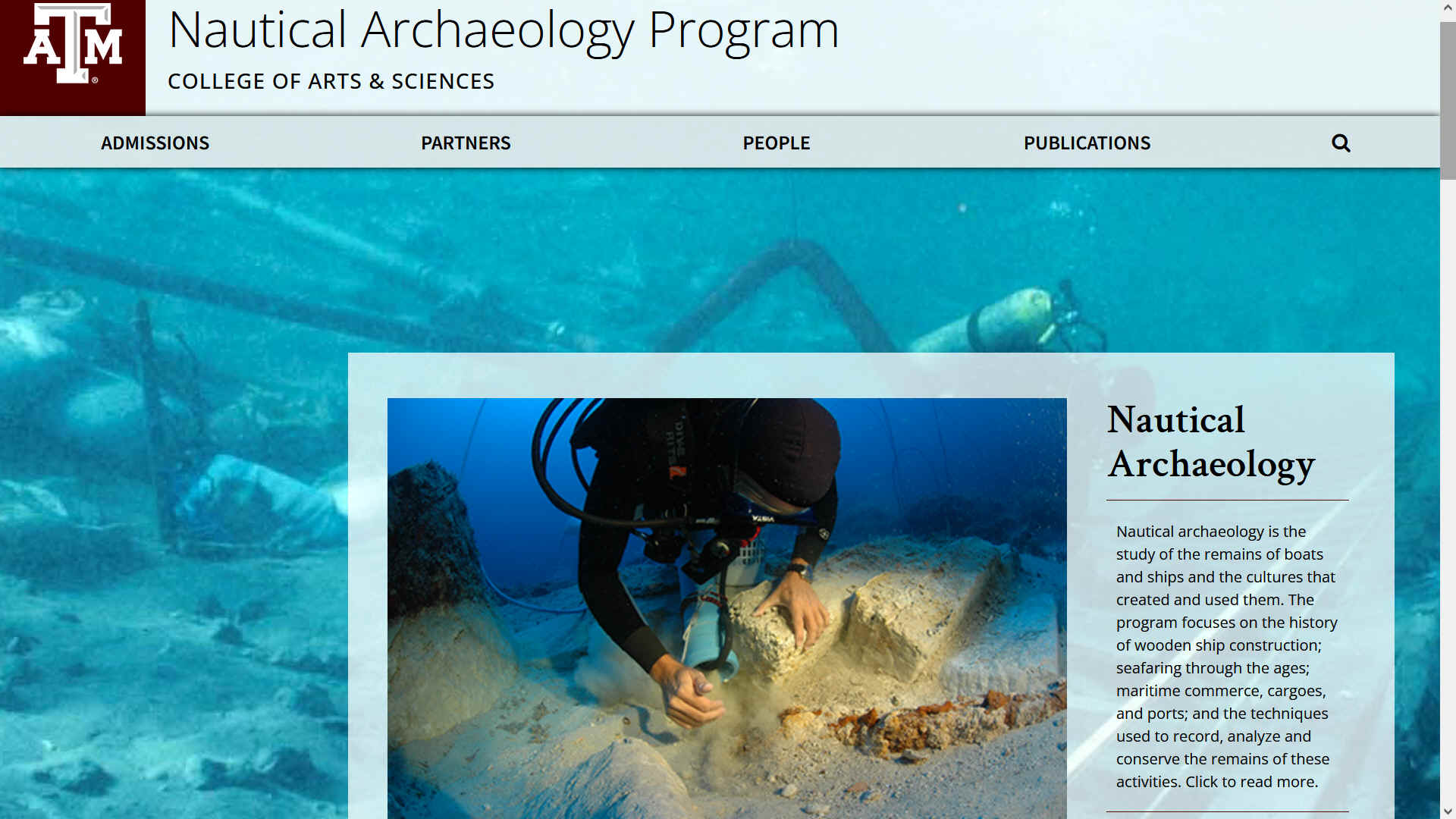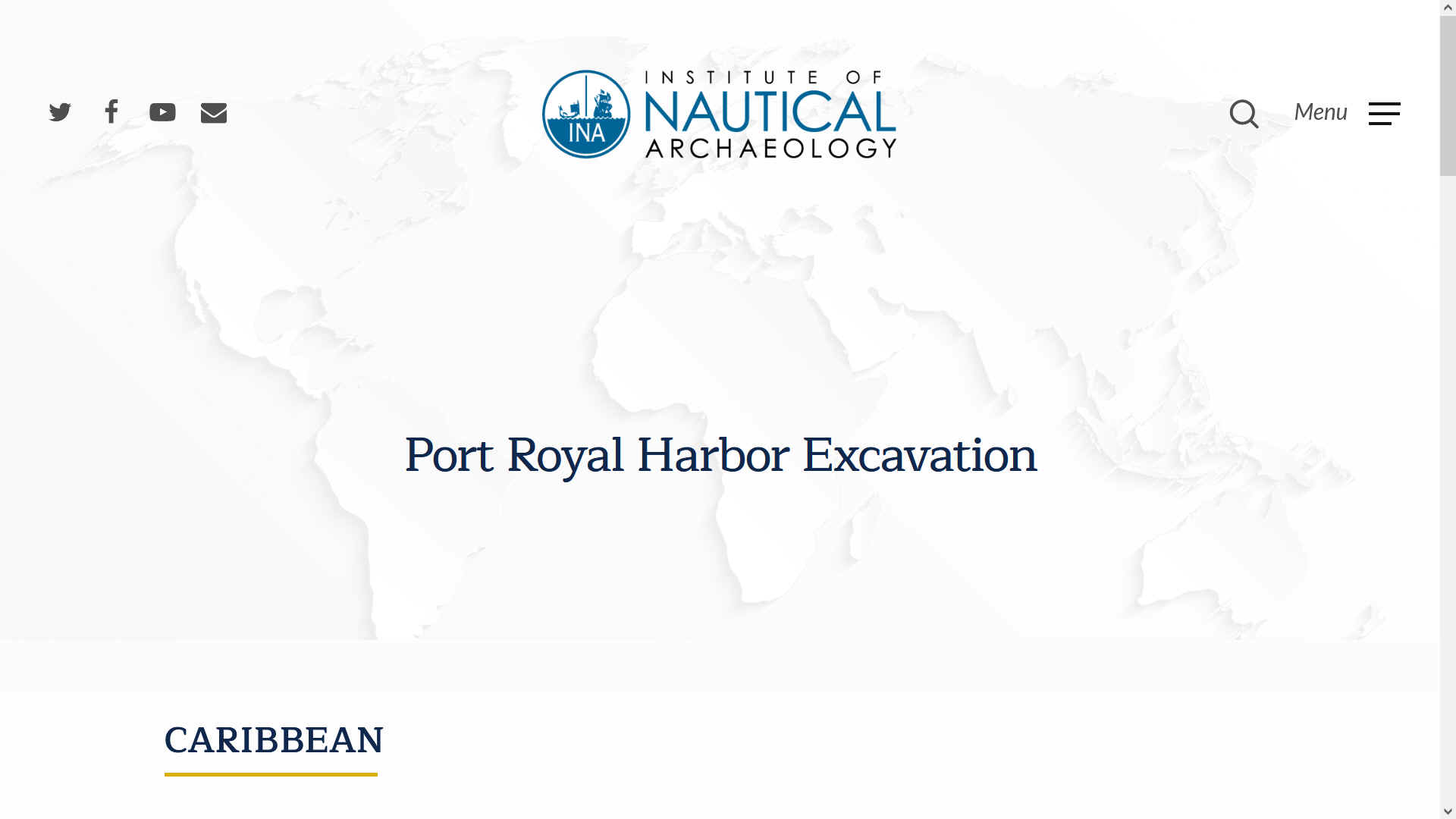
Starting
in 1981, INA, Texas A&M University, and the Jamaica National Heritage Trust began underwater archaeological investigations of the submerged portion of the 17th-century town of Port Royal, Jamaica. The Port Royal Project concentrated for 10 years on the submerged remains in the commercial center of the town. Once known as the ‘Wickedest City on Earth,’ Port Royal on the island of Jamaica was the second most important mercantile center in the English colonies during the late 17th century and a haven for privateers and pirates. On June 7 1692, a massive earthquake hit Jamaica, causing buildings to slide and disappear beneath the sea. An estimated 2000 residents were killed immediately and many more perished from injuries and disease in the following days.
The longest period of excavation at Port Royal took place from 1981 to 1990 under Donny Hamilton, an American archaeologist who carried out the work in conjunction with the Institute of Nautical Archaeology, Texas A&M University and the Jamaican National Heritage Trust (Hamilton 2008: 262).
Donny returned in 1992 for a further dive (Hamilton 2005: 166). Researchers from Texas A&M University continued to be based at Port Royal in 2012, carrying out archival research (Davis 2012).
The investigation of Port Royal yielded much more than simply trash and discarded items. An unusually large amount of perishable, organic artifacts were recovered, preserved in the
oxygen-depleted underwater environment. Five buildings including work complexes with a pipe shop/tavern/cobbler shop and residential houses were investigated thoroughly, contributing significantly to our understanding of 17th-century town planning, architecture, diet, cooking activities, and other aspects of daily life. Some human remains were uncovered from under the bricks of one of the fallen buildings, exemplifying the destruction of the
1692
earthquake, and the remains of a ship underneath another building have also been identified.
Together with the vast treasury of complimentary historical documents, the underwater excavations of Port Royal have allowed for a detailed reconstruction of everyday life in an English colonial port city of the late 17th century.
Founded in 1976, the Nautical Archaeology Program (NAP) is the academic degree-granting graduate program in the Department of
Anthropology at Texas A&M University. Nautical archaeology is the study of the remains of boats and ships and the cultures that created and used them. The program therefore focuses on the history of wooden ship construction; seafaring through the ages; maritime commerce, cargoes, and ports; and the techniques used to record, analyze and conserve the remains of these activities.
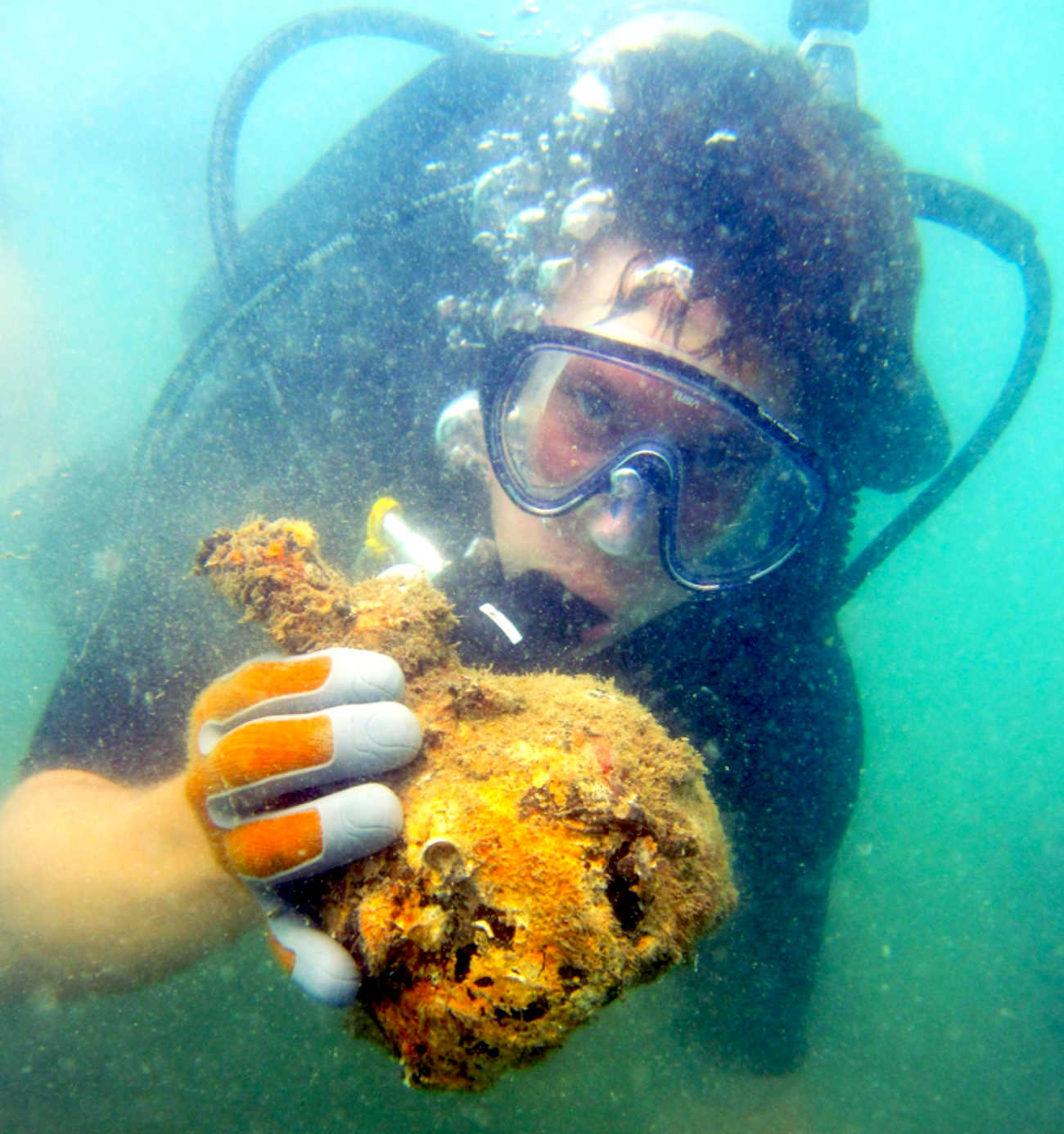
Chad
Gulseth with an onion bottle recovered at Port Royal
CONTACTS
Cemal Pulak, Program Coordinator
Nautical Archaeology Program
Department of Anthropology
Texas A&M University
College Station, TX 77843-4352 USA
Chris Dostal, Director
Center for Maritime Archaeology and Conservation
Texas A&M University
College Station, TX 77841-5137 USA
Chris Dostal, Director
Conservation Research Laboratory
Texas A&M University
College Station, TX 77843-4352 USA
Phone: (979) 862-7791
Fax: (979) 845-6399
Steven M. Oberhelman Interim Dean (979) 845-5143 s-oberhelman@tamu.edu
Kristine Brisco Assistant Dean for Finance and Administration (979) 845-6516
kbrisco@tamu.edu
Leroy G. Dorsey Associate Dean for Inclusive Excellence and Strategic Initiatives (979) 845-8541
l-dorsey@tamu.edu
Maria C. Escobar-Lemmon Associate Dean for Research and Graduate Education (979) 862-4043
m_escobar@tamu.edu
Violet Johnson Associate Dean for Faculty (979) 845-8541 vmjohnson@tamu.edu
Paul Wellman Associate Dean for Information Technology and Facilities (979) 845-2557
paul-wellman@tamu.edu
Garrett LaPaglia Director of Information Technology (979) 845-2529
glapaglia@tamu.edu
Andrew Millar Senior Director of Development (979) 845-5192 amillar@txamfoundation.com
Heather Rodriguez Manager of Strategic Communications (979) 845-6061
hrodriguez@tamu.edu
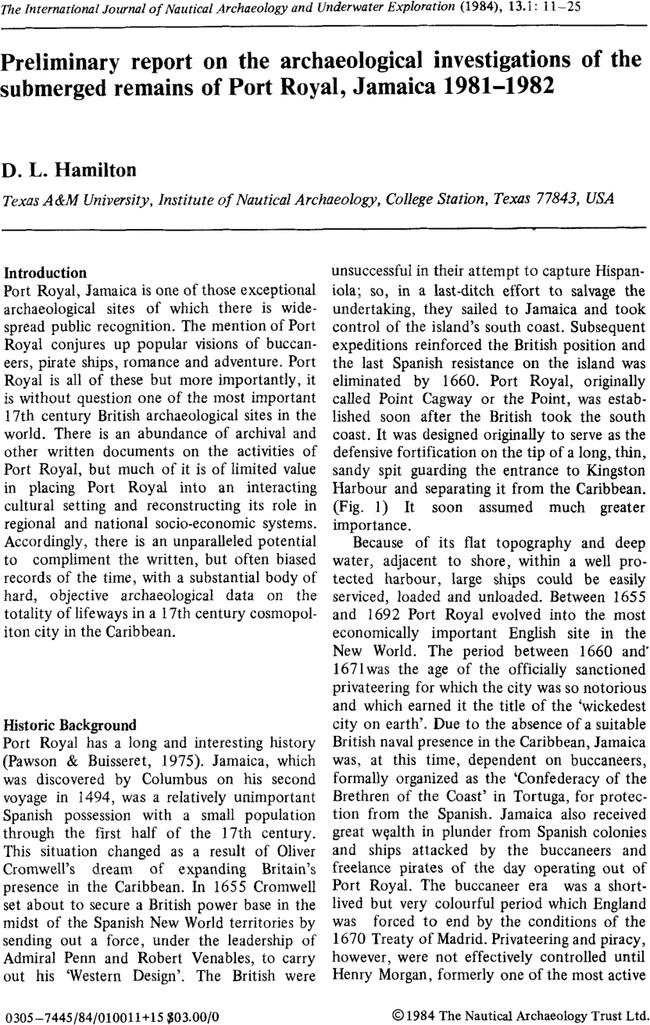
BIBLIOGRAPHY
Hamilton, D. L. 2005. “Resurrecting “The Wickedest City in the World”: Port Royal, Jamaica.” In Beneath the Seven Seas edited by G.F. Bass, 164-171. New York and London: Thames and Hudson.
Smith, W.C. 1997. “The Final Analysis of Weights from Port Royal, Jamaica.” BAR International Series 675. Oxford: England.
Hamilton, D. L. 1996. “Historical Archaeology on British Sites in the Seventeenth-Century Caribbean.” In The Archaeology of Sixteenth- and Seventeenth-Century British Colonization in the Caribbean, United States, and Canada. Guides to Historical Archaeological Literature, No. 4. The Society for Historical Archaeology.
Hamilton, D. L. 1992. “Simon Benning, Pewterer of Port Royal.” In Text-Aided Archaeology edited by B. J. Little 39-53. Boca Raton, FL: CRC Press.
Smith, W.C. 1991. “Radiography at Port Royal.” INA Newsletter 17(2):11-13.
Thornton, D. 1991. “A Tour of a Port Royal House.” INA Newsletter 18(1):7-9.
Clifford, S.A. 1991 “A Preliminary Report on a Possible 17th-century Shipwreck at Port Royal, Jamaica.” In Underwater Archaeology Proceedings from the Society for Historical Archaeology Conference. Richmond, Virginia 1991 edited by J.D. Broadwater, 80-83. The Society for Historical Archaeology.
Hamilton, D. L. 1991. “A Decade of Excavations at Port Royal, Jamaica.” In Underwater Archaeology Proceedings from the Society for Historical Archaeology Conference, Richmond, Virginia, 1991 edited by J.D. Broadwater, 90-94. The Society for Historical Archaeology.
Clifford, S.A. 1991. “The Port Royal Ship.” INA Newsletter 17(2):8-10. College Station: Institute of Nautical Archaeology.
Schoeder, E. K. 1990. “Spatial Patterns at Port Royal.” INA Newsletter 17(2):14-15
Hamilton, D. L. 1988. “INA Enters the SHARPS Era.” INA Newsletter 15(2):6-7.
Hunter, C. 1987. “Bones Offer Clues to Everyday Habits.” INA Newsletter 14(1/2):14. .
Hamilton, D. L. 1986. “The City Under the Sea.” In Science Year 1986, 92-109. Chicago: World Book Inc.
Hamilton, D. L. 1986. “Port Royal Revisited.” In Proceedings of the Fourteenth Conference on Underwater Archaeology edited by C.R. Cummings, 73-81. San Marino, CA: Fathom Eight.
Hamilton, D. L. 1984. “Preliminary Report on the Archaeological Investigations of the Submerged Remains of Port Royal, Jamaica, 1981-1982.” International Journal of Nautical Archaeology 13:11-25.
Hamilton, D.L. and R. Woodward. 1984. “A Sunken 17th-Century City: Port Royal, Jamaica.” Archaeology 37:38-45.
Peterson, M.L. 1972. “Traders and Privateers Across the Atlantic: 1492-1733.” In A History of Seafaring Based on Underwater Archaeology edited by G. F. Bass, 253-280. London: Thames and Hudson
Steffy, J. R. 1988. The Thirteen Colonies: English Settlers and Seafarers. In Ships and Shipwrecks of the Americas: A History Based on Underwater Archaeology edited by G.F. Bass, 117-119. New York: Thames & Hudson.
Several theses and dissertations have been written on
Port Royal which contain exceptional drawings of the site and artifacts. Below is a list of
potential contacts to these resources.
Clifford, Sheila A. - 1993 An Analysis of the Port Royal Shipwreck and its Role in the Maritime History of Seventeenth-Century Port Royal, Jamaica. Master’s thesis, Department of Anthropology, Texas A&M University, College Station.
Darrington, Glenn - 1994 Analysis and Reconstruction of Impernanent Structures in the 17th and 18th Centuries. Master’s thesis, Department of Anthropology, Texas A&M University, College Station.
Dewolf, Helen Catherine - 1998 Chinese Porcelain and Seventeenth-Century Port Royal, Jamaica. Doctoral Dissertation, Department of Anthropology, Texas A&M University, College Station.
Donachie, Madeleine - 2001 Household Ceramics at Port Royal, Jamaica, 1655-1692: The Building 4/5 Assemblage. Doctoral Dissertation, Department of Anthropology, Texas A&M University, College Station.
Franklin, Marianne - 1992 Wrought-Iron Hand Tools in Port Royal, Jamaica: A Study Based Upon a Collection of the Tools Recovered from Archaeological Excavations and Listed in the Probate Records of Colonial Port Royal, c. 1692. Master’s thesis, Department of Anthropology, Texas A&M University, College Station.
Fox, Georgia Lynn - 1998 The Study of the Kaolin Clay Tobacco Pipe Collection from the Seventeenth-Century Archaeological Site of Port Royal, Jamaica. Doctoral dissertation, Department of Anthropology, Texas A&M University, College Station.
Gotelipe-Miller, Shirley - 1990 Pewter and Pewterers from Port Royal, Jamaica: Flatware before 1692. Master’s thesis, Department of Anthropology, Texas A&M University, College Station.
Hailey, Tommy Ike - 1994 The Analysis of 17th-, 18th-, and 19th-Century Ceramics from Port Royal, Jamaica, for Lead Release: A Study in Archaeotoxicology. Doctoral dissertation, Department of Anthropology, Texas A&M University, College Station.
Heidtke, Kenan - 1992 Jamaican Red Clay Pipes. Master’s thesis, Department of Anthropology, Texas A&M University, College Station.
McClenaghan, Patricia Elizabeth - 1988 Drinking Glasses from Port Royal, Jamaica c.1630-1840: A Study of Styles and Usuage. Master’s thesis, Department of Anthropology, Texas A&M University, College Station.
C. Wayne Smith - 1995 Analysis of the Weight Assemblage of Port Royal, Jamaica. Doctoral Dissertation, Department of Anthropoology, Texas A&M Universty, College Station.
Thornton, Diana - 1992 The Probate Inventories of Port
Royal, Jamaica. Master’s thesis, Department of Anthropology, Texas A&M University, College Station.
Trussel, Timothy D. - 2004 Artifacts of Ambition: How the 17th-century Middle Class at Port Royal, Jamaica, Forshadowed the Consumer Revolution. Master’s Thesis, Department of Anthropology, Texas A&M University, College Station.
Wadley, Catheryn Ann - 1985 Historical Analysis of Pewter Spoons Recovered from the Sunken City of Port Royal, Jamaica. Master’s thesis, Department of Anthropology, Texas A&M University, College Station.
Winslow, Debora - 2000 Analysis of the Holloware Pewter from Port Royal, Jamaica. Master’s thesis, Department of Anthropology, Texas A&M University, College Station.
Texas A&M University's project was the sixth quest, to dive on the sunken city, in
hopes of discovering more about the submerged pirate haven.
Port Royal, was held to be the wickedest place on earth, dashed by the
waves as punishment for the brothels, copious taverns and bawdy
lifestyles from the privateers wealth, by way of an act of
God.
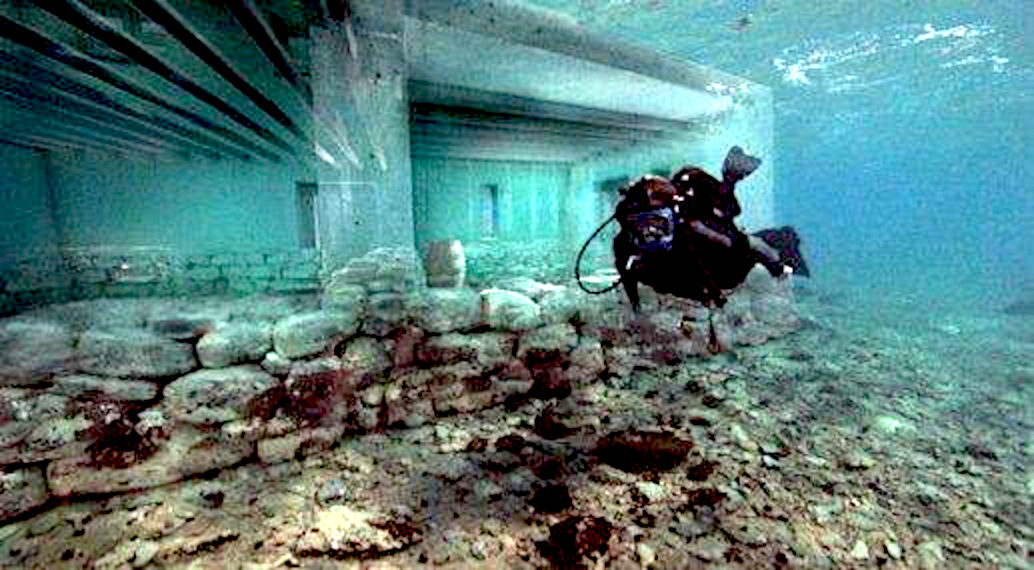
A
diver using SCUBA gear to explore Port Royal
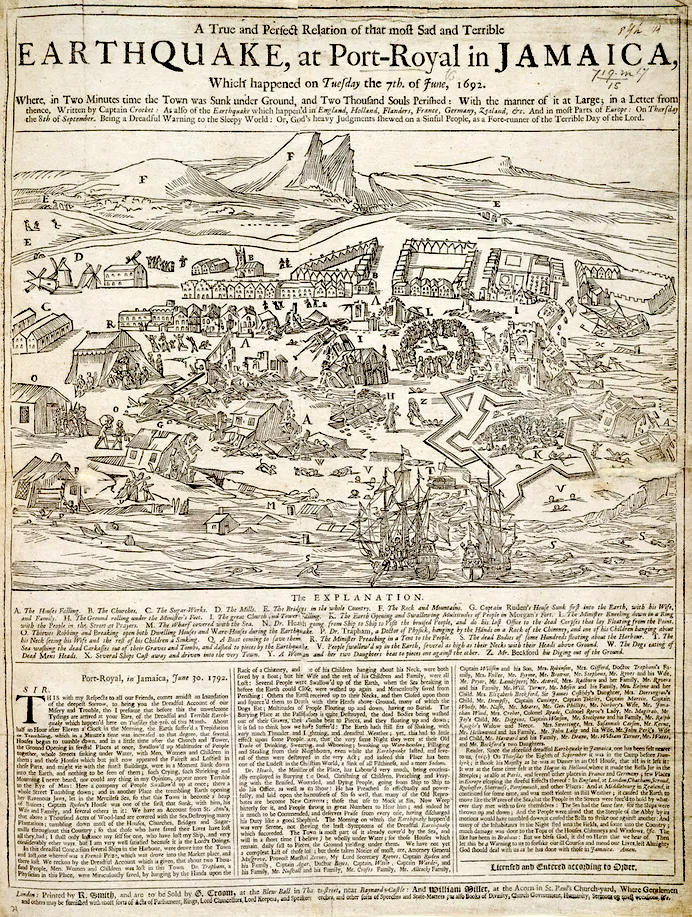
Captain
Sir Henry Morgan was a pirate, and privateer, ending up as the Governor of
Jamaica. He was buried at Palisadoes
Cemetery, then Port Royal was washed
into the Caribbean Sea, the result of an earthquake and
tsunami in 1692. Not to be
seen again for 300 years.
UNDERWATER
ARCHAEOLOGY EXCAVATION IN PORT ROYAL
Underwater explorations and excavations have been conducted in Port Royal over the years. Here is a listing of such excavations. After the 1692 earthquake, people tried to
salvage anything considered to be valuable from the area, which became known as the Sunken City.
1859: Jeremiah Murphy a naval diver, using a diving bell located the remains of Fort James.
1956 - 1959: Edwin Link dug test pits in the King's Warehouse and Fort James.
1960:
Norman Scott explored Fort Carlisle.
1965 - 1968: Robert Marx excavated between twenty to thirty buildings in the Sunken City.
1969
- 1970: Philip Mayes Excavation. Mayes was hired by the Jamaican National Trust Commission to continue research. Mayes is accredited with uncovering
St. Paul’s Church of Port Royal, the largest building of the 17th century city.
1981 - 1990: Institute of Nautical Archaeology of the Texas A&M
(Agricultural & Mechanical) University in close cooperation with the Archaeology Division excavated buildings near the intersection of Queen and High Street.
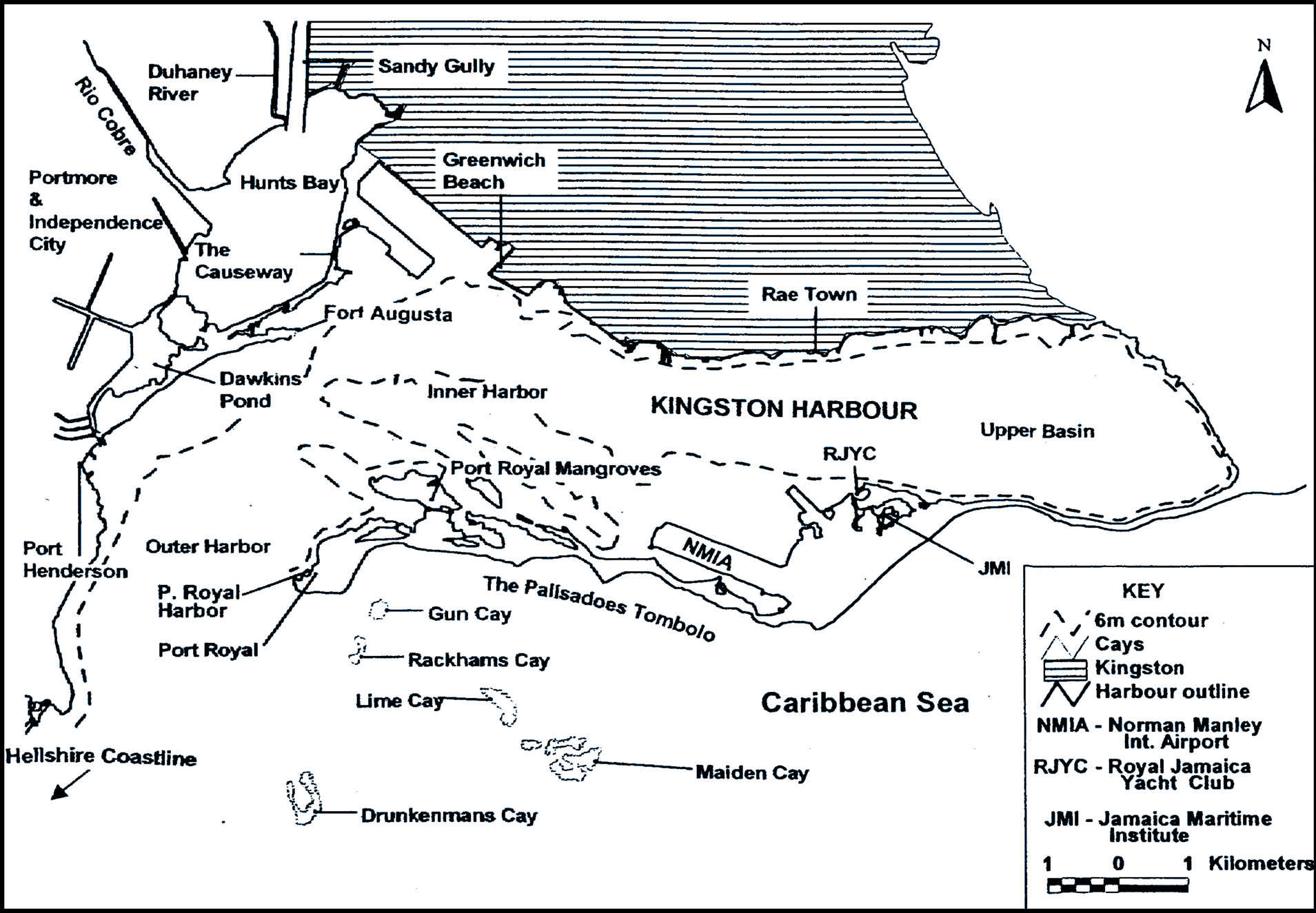
Port Royal mangroves: Hurricane Refuge lagoon, Fort Rocky lagoon and Cemetery lagoon.
An
earthquake in the Caribbean
struck Port Royal, Jamaica, on
the 7th of June 1692. A stopped pocket watch found in the harbor during a 1959 excavation
conducted by Edwin
Link and his wife Marion, indicated that the resultant tsunami occurred around 11:43 AM local time.
Known as the "storehouse and treasury of the West Indies" and as "one of the wickedest places on Earth", Port Royal was, at the time, the unofficial capital of Jamaica and one of the busiest and wealthiest ports in the Americas, as well as a common home port for many of the privateers and pirates operating on the
Caribbean
Sea. Sometimes called the Sodom of the Universe.
The 1692 earthquake caused most of the city to sink below sea level. About 2,000 people died as a result of the earthquake and the following tsunami, and another 3,000 people died in the following days due to injuries and disease.
